Thomas, Joseph Frank
Killed in Flying Accident 1949-04-21
Service
RCAF
Unit
412 (T) Sqn- Squadron
Promptus Ad Vindictam Swift to Avenge
Base
RCAF Station Rockcliffe
Rank
Flight Lieutenant
Position
Flight Lieutenant
Service Numbers
J/7975
Home
 Toronto, Ontario
Toronto, Ontario
First Burial
 Beechwood Cemetery, Ottawa, Ontario, Canada
Beechwood Cemetery, Ottawa, Ontario, Canada
Expeditor Mk. 3T 1425
Transport 1949-April-21 to 1949-April-21
412 (T) Sqn (RCAF) RCAF Station Rockcliffe
412 Squadron RCAF Station Rockcliffe. Known as the VIP Squadron, 412 Squadron transported dignitaries and "Very Important People". Expeditor aircraft 1425 departed RCAF Station Rockcliffe for a flight to RCAF Station Chatham and vanished with seven passengers and crew aboard. The wreckage of the aircraft and remains of the crew were not found until August 30,1955, in a heavily wooded area, some 65 miles west of Chatham, New Brunswick
Flight Lieutenant J F Thomas (RCAF), Flying Officer K Hinde (RCAF), Leading Aircraftman J T C Cavanagh (RCAF), Wing Commander B H Beck (RCAF), Wing Commander J H Drury (RCAF), Squadron Leader F W Darnell (RCAF) and civilian passenger L C Parkes were all killed in this flying accident
Expeditor 1425 was the last of 44 ordered by the RCAF, the surviving aircraft were converted to 3T military trainer configuration in 1952
Expeditor 1425
Beechcraft Expeditor
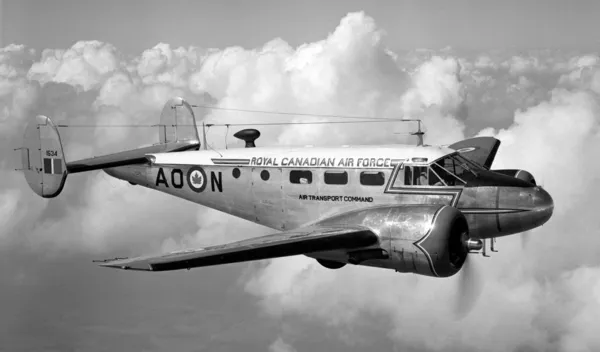
Beechcraft CT-128 Expeditor Mk. 3TM (Serial No. A-734), (Serial No. CA-134), RCAF (Serial No. 1534), coded AO-N, Air Transport Command.
The Beechcraft Model 18 (or "Twin Beech", as it is also known) is a 6- to 11-seat, twin-engined, low-wing, tailwheel light aircraft manufactured by the Beech Aircraft Corporation of Wichita, Kansas. Continuously produced from 1937 to November 1969 (over 32 years, a world record at the time), over 9,000 were built, making it one of the world's most widely used light aircraft. Sold worldwide as a civilian executive, utility, cargo aircraft, and passenger airliner on tailwheels, nosewheels, skis, or floats, it was also used as a military aircraft.
During and after World War II, over 4,500 Beech 18s were used in military service "“ as light transport, light bomber (for China), aircrew trainer (for bombing, navigation, and gunnery), photo-reconnaissance, and "mother ship" for target drones "“ including Royal Canadian Airforce (RCAF), United States Army Air Forces (USAAF) C-45 Expeditor, AT-7 Navigator, and AT-11 Kansan; and United States Navy (USN) UC-45J Navigator, SNB-1 Kansan, and others. In World War II, over 90% of USAAF bombardiers and navigators and pilots trained in these aircraft.
In the early postwar era, the Beech 18 was the pre-eminent "business aircraft" and "feeder airliner". Besides carrying passengers, its civilian uses have included aerial spraying, sterile insect release, fish stocking, dry-ice cloud seeding, aerial firefighting, air-mail delivery, ambulance service, numerous movie productions, skydiving, freight, weapon- and drug-smuggling, engine testbed, skywriting, banner towing, and stunt aircraft.Wikipedia
412 (T) Sqn Promptus Ad Vindictam ("Falcon")
History of the Squadron during World War II (Aircraft: Spitfire Mks. IIA, VB, IXB, IXE, XVI, XIV)
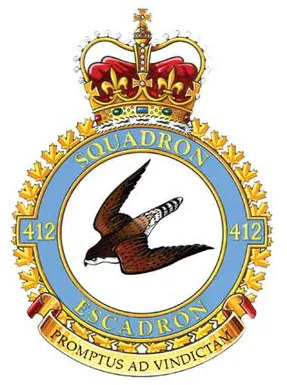
The squadron was the tenth of the RCAF's squadrons to be formed overseas in WWII. It was the seventh fighter squadron to be so formed. It was established at Digby, Lincolnshire, England on June 30, 1941. John Gillespie Magee, the author of the famous aviation poem “High Flight†was serving with 412 Squadron when he was killed in a mid-air collision in his Spitfire in 1941. The squadron flew Spitfire aircraft in the defence of Great Britain, formed part of the Canadian Kenley Wing within No. 11 Group, Fighter Command. It was re-equipped with the Spitfire lXb in November 1943 and began operating over northern France in preparation for operation Overlord, the D-Day landings. It was during late 1943 that the ace George “Screwball†Beurling scored his last air victory while serving with the squadron. Shortly after D-Day, on June 19, 1944, the squadron moved to France in a fighter and ground support role. It then supported the Allied armies, moving through France, the Belgium, the Netherlands and Germany. It was one of four RCAF day fighter units retained in Germany as part of the British Air Forces of Occupation before being disbanded at Utersen, Germany on March 21, 1946.
In the course of hostilities, the squadron flew 12,761 sorties for the loss of 63 aircraft and 62 pilots, of whom 21 were killed, 14 presumed dead, 11 POW. The squadron claimed 106 enemy aircraft destroyed, 11 probably destroyed and 46 damaged. On the ground, they claimed 282 motor vehicles and 22 locomotives. The squadron had 5 aces (shot down 5 or more enemy aircraft): Flight Lieutenant D.C. Laubman DFC & Bar; Flight Lieutenant W.J. Banks,DFC & Bar; Flying Officer D.R.C. Jamieson DFC & Bar; Flying Officer P.M. Charron; Flight Lieutenant R.I.A. Smith DFC. Overall, the squadron was awarded 7 Bars to DFC, 16 DFCs and 4 MiD. Battle Honours were: Defence of Britain 1941-44, Wikipedia, Kostenuk and Griffin
Maps for Movements of 412 Squadron 1941-46
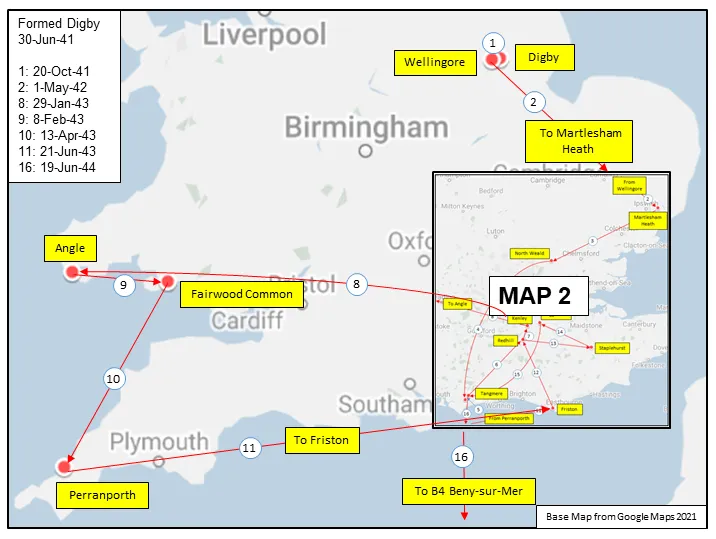 MAP 1: 412 Squadron Movements 1941-44 (right-click on image to display enlarged in new tab) | 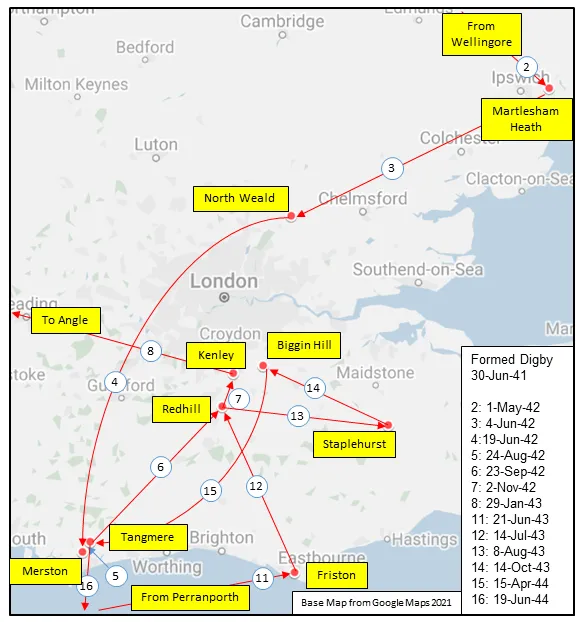 MAP 2: 412 Squadron Movements Detail of Map 1 | 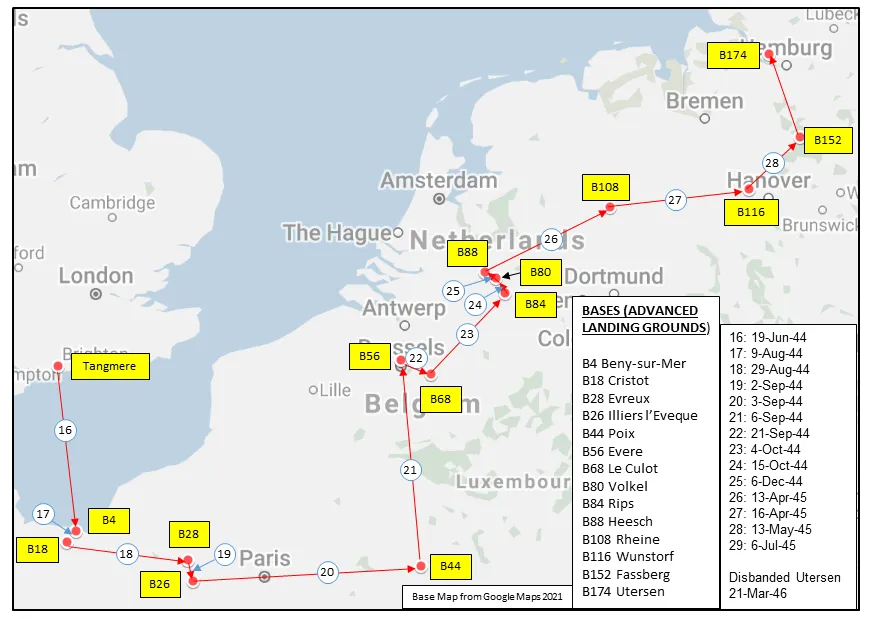 MAP 3: 412 Squadron Movements in Europe 1944-46 |
412 Squadron History Summary 1941-46
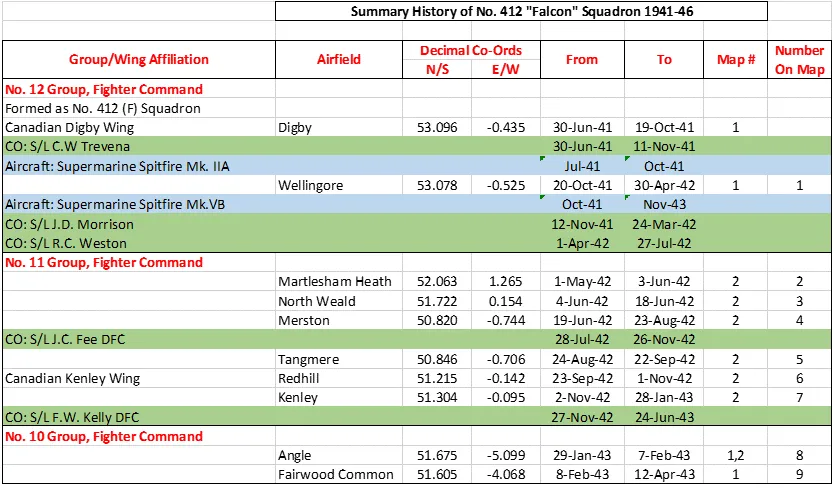
412 Squadron History Summary 1941-46 Page 2
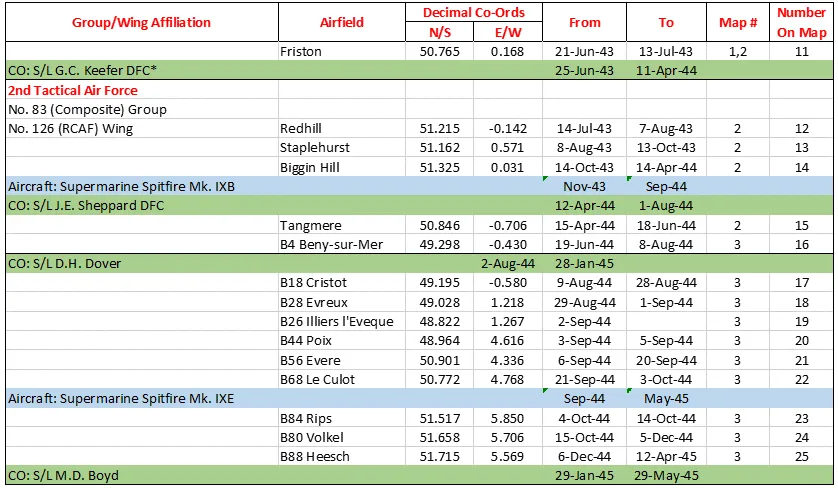
412 Squadron History Summary 1941-46 Page 3

History of the Squadron Post-WWII (Aircraft: CC-117 Falcon, CC-144 Challenger and CC-109 Cosmopolitan)
After the Second World War, Number 12 Communications Flight was reassigned as 412 Squadron on 1 April 1947, and renamed 412 (Composite) Squadron based at Rockcliffe, Ontario . In 1955, the squadron moved to Uplands, Ontario. Upon unification in 1968, 412 Squadron became the VIP squadron for the Canadian Forces based at CFB Uplands and flew the CC-117 Falcon, CC-144 Challenger and CC-109 Cosmopolitan. In the late 1970s a sub-unit was established at CFB Lahr in West Germany; this operation closed in 1993. In 1994, CFB Ottawa (Uplands) closed and 412's fleet was moved to a civilian hangar at Ottawa International Airport. All aircraft are maintained by Transport Canada on behalf of the Canadian Forces. Today, the Squadron performs the VIP and general transport duties with the CC-144 Challenger.



 Canadian Virtual War Memorial
Canadian Virtual War Memorial Aviation Safety Network
Aviation Safety Network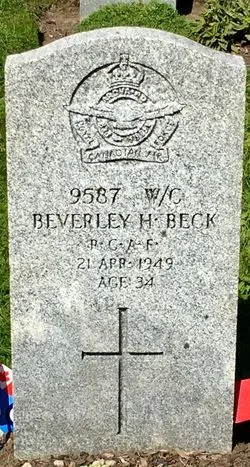
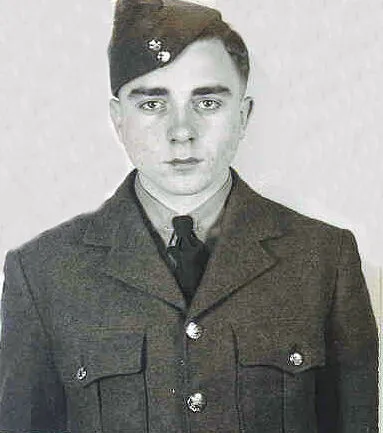
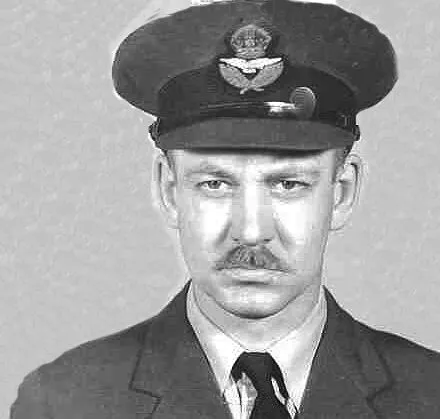
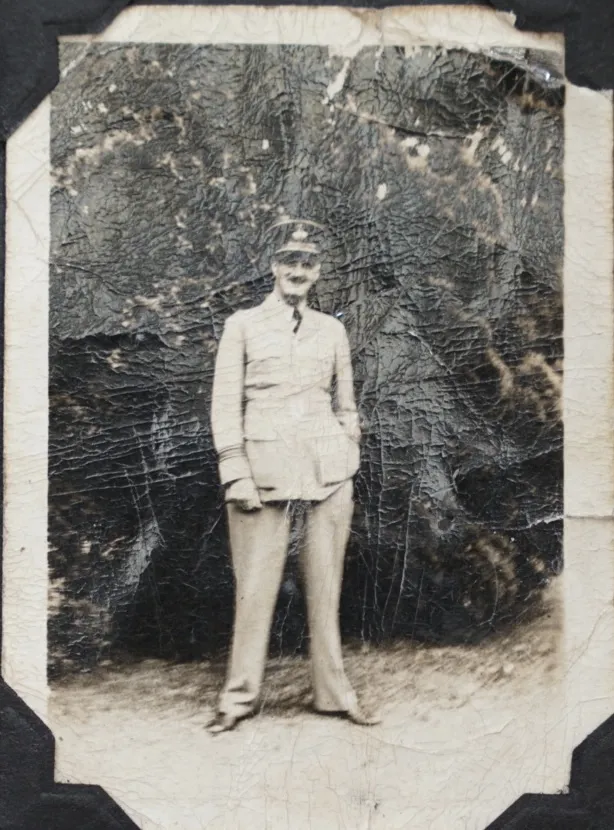

 Expeditor
Expeditor Wikipedia Expeditor
Wikipedia Expeditor